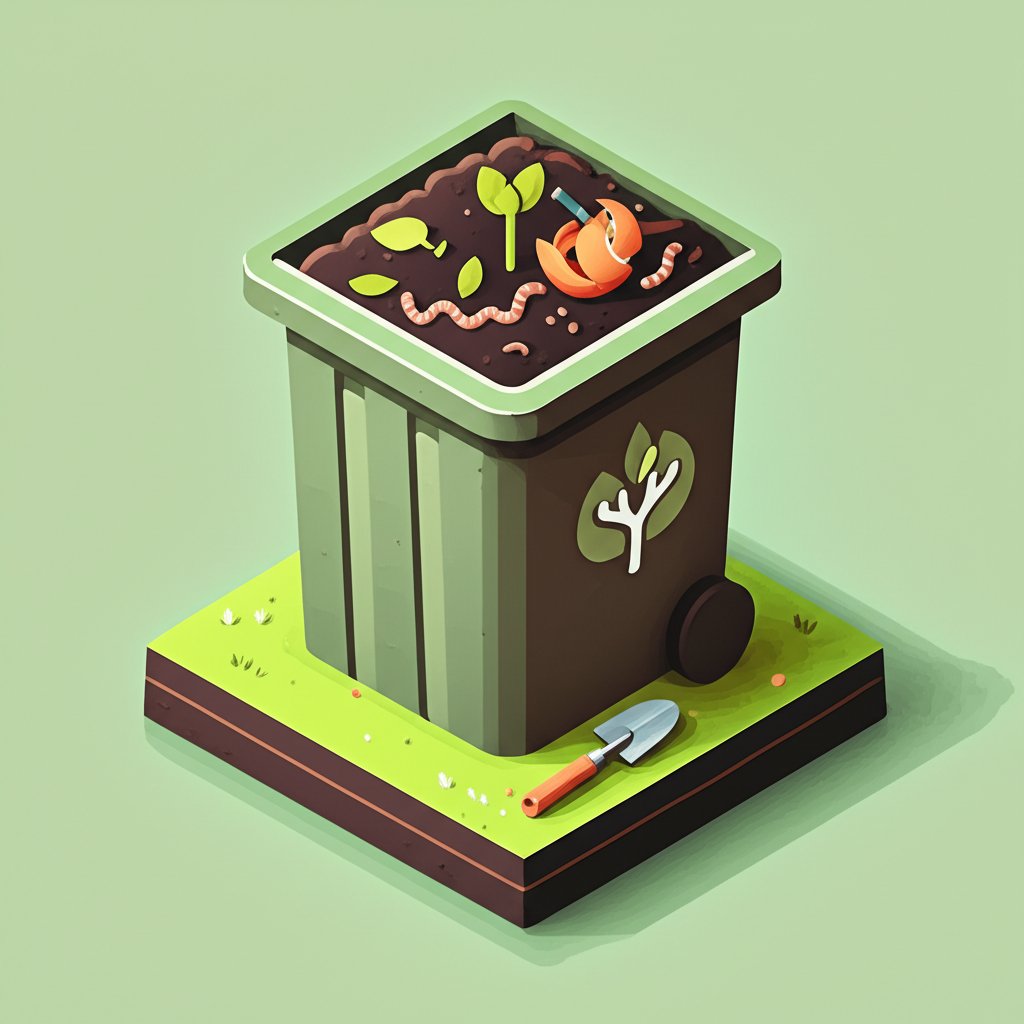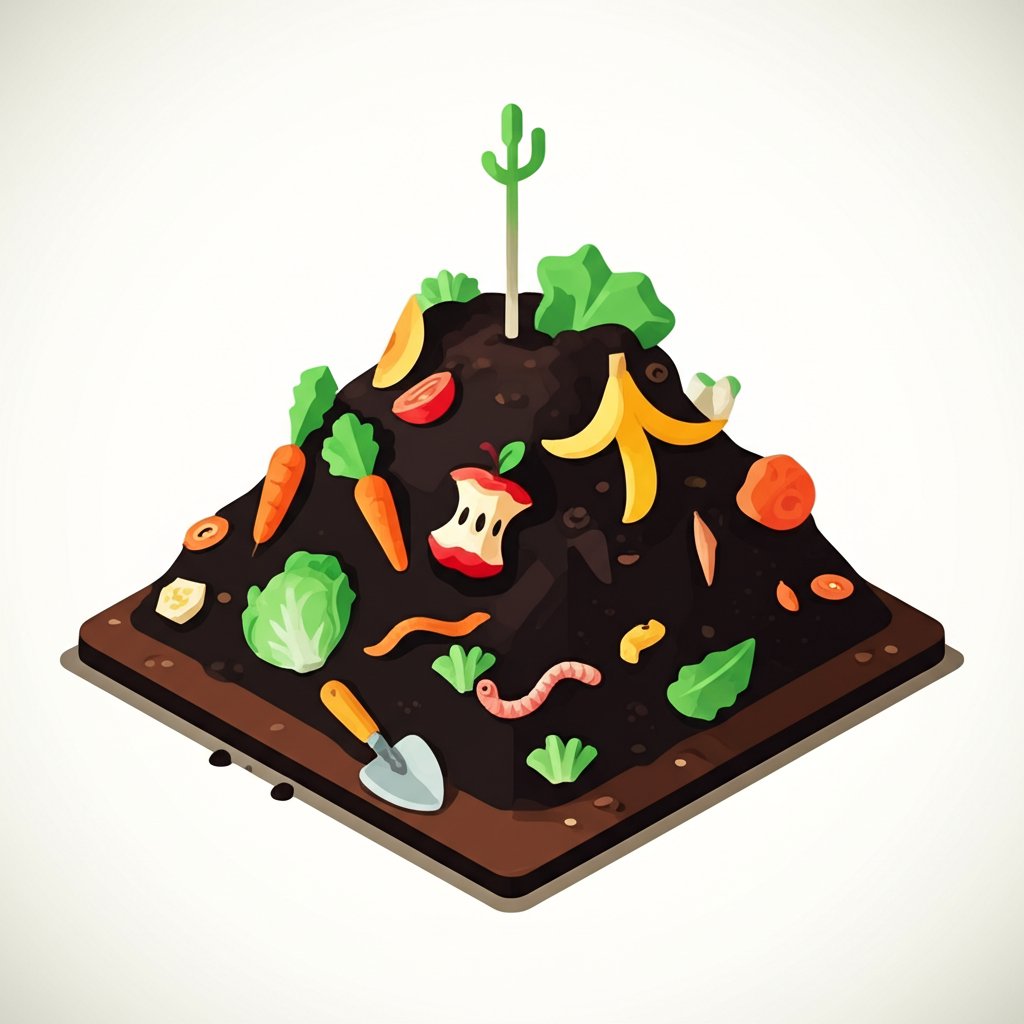As a conscientious gardener, you understand the invaluable role compost plays in nurturing vibrant plant life and fostering healthy soil ecosystems. But what happens when that meticulously crafted pile or last season’s unopened bag sits for a while? A common question often arises: does compost go bad? The notion of an “expiration date” for something as natural as compost can be confusing. Unlike milk or bread, compost doesn’t typically “spoil” in a way that makes it harmful. However, its effectiveness and nutritional potency can certainly diminish over time.
In this comprehensive guide, we’ll delve deep into the fascinating shelf life of compost, examining the science behind its dynamic nature. We’ll explore exactly what happens to compost over time, clarify whether can compost go bad, and provide expert insights into how long does compost last once opened or stored. Prepare to uncover the full truth and learn how to maximize the value of every speck of your garden’s black gold.
The Truth About Compost’s “Expiration”: It Doesn’t Spoil, It Evolves

To truly answer the question, “does compost go bad,” we must first redefine what “bad” means in this context. Finished compost is not a static product; it’s a living, breathing ecosystem teeming with beneficial microorganisms. These microbes are the powerhouses behind decomposition, continuously breaking down organic matter and cycling nutrients.
When we talk about compost “going bad,” we’re generally not referring to a putrid, rotten state (unless it’s improperly managed). Instead, we’re talking about a gradual decline in its peak potency and microbial diversity. Over time, even perfectly finished compost will undergo further, slower decomposition.
Defining “Bad”: What Can Compost Go Bad Actually Mean?
For most gardeners, the concern isn’t that compost will become toxic, but that it will lose its “oomph.” Here’s what “going bad” for compost usually means:
- Loss of Nutrient Density: The readily available macro and micronutrients, which are at their peak shortly after the composting process concludes, become less concentrated as they are either used by the remaining microorganisms or leached out by moisture.
- Reduced Microbial Activity: The vibrant community of bacteria, fungi, actinomycetes, and other beneficial organisms that facilitate rapid nutrient cycling and disease suppression will naturally decline in diversity and population over extended periods without fresh food sources or ideal conditions.
- Diminished Organic Matter Structure: The complex organic compounds that contribute to soil structure, water retention, and aeration can continue to break down into simpler forms, making the compost less effective at improving physical soil properties.
So, while can compost go bad in the sense of becoming completely unusable? Rarely. But its ability to deliver peak benefits certainly wanes.
The Dynamic Nature of Finished Compost
Even after your compost pile has cooled and matured into dark, crumbly, earthy-smelling goodness, the biological processes don’t cease entirely. They simply slow down significantly. The remaining microorganisms continue to work at a leisurely pace, further refining the organic matter. This ongoing, slower decomposition means that the compost is constantly (albeit slowly) changing its composition. Understanding this dynamic nature is key to managing its shelf life effectively.
Factors Influencing Compost Shelf Life and Potency
The rate at which compost loses its peak effectiveness is not uniform. Several critical environmental and compositional factors play a significant role in determining its longevity.
Moisture Levels: Too Wet, Too Dry, or Just Right?
Moisture is paramount for microbial life.
Temperature Fluctuations and Microbial Activity
Just like moisture, temperature impacts microbial health.
Airflow and Anaerobic Conditions: A Recipe for Trouble
Good aeration is essential for beneficial aerobic bacteria. When compost is tightly packed in an airtight bag or an un-turned pile, oxygen becomes scarce.
Original Composition and Nutrient Retention
The initial mix of materials in your compost pile influences its stability.
Added Ingredients in Commercial Compost
Many commercially bagged composts contain amendments like peat moss, perlite, vermiculite, and sometimes even slow-release synthetic fertilizers or pre-mixed plant foods.
How Long Does Compost Last? Unpacking Shelf Life for Different Scenarios
The lifespan of compost varies significantly depending on whether it’s homemade or store-bought, and critically, how it’s stored. The question “how long does compost last once opened” is one of the most common for gardeners.
How Long Does Compost Last Once Opened (Bagged Compost)
Once you open a bag of commercial compost, its tightly controlled, often anaerobic, environment is exposed to air, moisture, and temperature fluctuations.
Key Recommendation: Aim to use opened bags of compost within a growing season for optimal results.
Homemade Compost: The Storage Paradox
Homemade compost, often produced in larger quantities, can be more resilient but also more prone to environmental influences if not managed correctly.
Unopened Bagged Compost: Manufacturer Guidelines
For unopened bags, the shelf life is generally longer due to the sealed environment, which minimizes moisture loss and microbial activity.
The “Sweet Spot” for Peak Effectiveness
Regardless of type, compost is typically most potent and beneficial within the first few months after it reaches full maturity or after opening a bag. This is when its microbial communities are most active and its nutrient profile is most robust. Using it within this window ensures your plants get the maximum benefit.
Recognizing “Less Effective” vs. “Truly Bad” Compost

Knowing the difference between compost that has simply lost some potency and compost that could actually be detrimental to your garden is crucial.
Signs of Diminished Nutritional Value
Compost that has aged gracefully but lost some nutritional punch will often:
This type of compost is still excellent for improving soil structure, water retention, and as a bulking agent, even if its immediate fertilizing power is reduced.
Warning Signs of Anaerobic or Contaminated Compost
This is where compost truly borders on “bad” and should be treated with caution, as it can harm plants.
* Ammonia-like (like cat urine): Indicates excess nitrogen breaking down anaerobically.
* Sulfurous (rotten eggs): A strong indicator of severe anaerobic conditions.
* Sour/Vinegary: Can also suggest anaerobic processes, particularly if there’s a lot of wet, dense material.
The Smell Test: Earthy vs. Rotten
Your nose is your most reliable tool.
What to do with truly bad-smelling compost? Don’t discard it! Often, it can be salvaged by aerating it (turning it well), adding more dry, carbon-rich materials (like shredded leaves or straw), and ensuring proper moisture. This helps restore aerobic conditions.
Maximizing Your Compost’s Longevity and Rejuvenating Older Batches
Even if your compost isn’t at peak potency, it doesn’t mean it’s useless. With proper storage and a bit of rejuvenation, you can extend its life and unlock its continued benefits.
Optimal Storage Practices for Opened and Unopened Bags
To get the most out of your purchased compost:
Revitalizing Older Homemade Piles
If your homemade compost has been sitting for a long time and seems less vibrant:
Practical Uses for Aged or Less Potent Compost
Don’t ever throw away old compost! It still offers tremendous value:
Conclusion
The definitive answer to “does compost go bad?” is nuanced: no, not in the sense of spoiling like food, but yes, its peak effectiveness and nutritional firepower will diminish over time. Finished compost is a living marvel, continually undergoing subtle changes. Its true value lies in its dynamic nature and the rich community of organisms it supports.
Understanding the factors that influence its shelf life – primarily moisture, temperature, and aeration – empowers you to store it wisely. Whether it’s a freshly opened bag or a forgotten pile, proper care can extend its utility. Even aged compost, though less potent, remains a precious resource for improving soil structure and nurturing long-term garden health. So, don’t fear the passage of time with your compost; instead, learn to work with its natural evolution, and your garden will thank you with thriving growth season after season.
FAQ: Your Top Questions About Compost Shelf Life Answered
Q1: Can compost spoil like food, becoming harmful to plants?
A1: No, finished compost does not spoil like food (e.g., milk or meat) in a way that makes it inherently toxic or dangerous to plants. However, if stored improperly (especially in overly wet, airtight, or anaerobic conditions), it can develop foul odors and produce compounds that are detrimental to plant roots. This is more a sign of an unhealthy microbial environment than “spoilage” in the traditional sense.
Q2: What are the main signs that compost has lost its effectiveness or is “old”?
A2: Old compost often looks very dark, uniform, and fine-textured, almost like rich soil. It will be cool to the touch and typically retain a pleasant, earthy smell, though it might be less intense than fresh compost. If it has lost significant effectiveness, it will primarily contribute to soil structure and organic matter, with less immediate nutrient boosting power.
Q3: How long does compost last once opened, specifically for bagged products?
A3: Once opened, bagged compost typically retains its peak nutritional value and microbial activity for about 3 to 6 months if stored properly (sealed, cool, dry, shaded). After this period, and certainly beyond a year, its volume of active microbes and readily available nutrients will significantly decrease, though it remains valuable for improving soil structure.
Q4: What’s the best way to store compost long-term to maximize its lifespan?
A4: For opened bagged compost, re-seal the bag tightly, or transfer it to a lidded, sturdy container (like a garbage can with a tight-fitting lid). Store it in a cool, dry, shaded location, such as a shed, garage, or under a tarp, to protect it from extreme temperatures, direct sunlight, and excess moisture. For homemade compost, keep the pile covered, moist (like a wrung-out sponge), and turn it occasionally to maintain aeration.
Q5: Is old compost harmful to my plants? Can compost go bad and damage my garden?
A5: No, old compost—even if it has lost significant nutritional value—is generally not harmful to plants. It will still contribute organic matter and improve soil structure. The only time compost might be detrimental is if it has gone severely anaerobic (smelling strongly of sulfur or ammonia) due to improper storage. In such cases, it should be aerated and revitalized before use.
Q6: Can compost go bad if it smells bad? What should I do?
A6: If your compost has a foul, rotten, or sour smell (like ammonia, sulfur, or vinegar) instead of a pleasant earthy odor, it indicates that anaerobic (oxygen-free) decomposition is occurring, which is indeed “bad” for its quality. Do not use very foul-smelling compost directly on plants. To remedy this, aerate the compost thoroughly by turning it, add more dry, carbon-rich materials (like straw or shredded leaves), and adjust moisture levels if it’s too wet. This will help restore healthy aerobic activity.
Q7: Can I mix old compost with fresh compost or new organic materials?
A7: Absolutely! Mixing old compost with fresh compost or new organic materials is an excellent strategy. The older compost acts as an inoculum, introducing beneficial microorganisms to the new material, thereby speeding up the decomposition process. It also helps to distribute the remaining nutrients from the old compost and provides a valuable organic base for your new additions.










